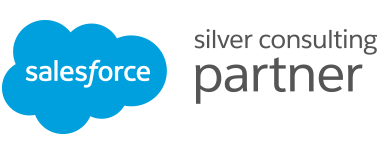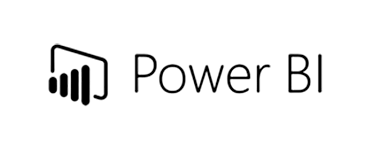Have you just upgraded your CRM system to Salesforce? Or do you feel like your users aren’t getting the most out of the platform?
We have listed the 6 steps you should consider following to achieve the best user onboarding.
Why?
Whatever CRM system you are using, the key to success is the way the system is implemented, managed and tailored to your business processes. Your business flows should run IT – not the other way around! So whether you have just made the switch to Salesforce or you’ve been running your processes on it for a while, there is a lot to gain from making sure your teams embrace and use the system to its full potential!
This shift in company culture is one of the most important foundations for successful adoption of new IT solutions. Failure to do so can result in:
- Limited adoption by your salespeople and executives
- Limited data entry resulting in the loss of critical data and business insights
- Lack of consistency which produces misleading reports and dashboards
- Poor data quality that informs poor decision-making
- Limited enthusiasm and lack of conviction from teams when using the CRM system
As a leader responsible for CRM adoption, one of your main responsibilities (and challenges) will be to educate and motivate your teams to use Salesforce to its full potential.
STEP 1 – ENGAGE YOUR EMPLOYEES
Engage your employees in the big picture by telling them how all teams stand to benefit from proper CRM implementation and use, and the crucial role they play in enabling this change. By involving your employees in the strategic aspects and getting them to visualize and share your company’s end goals, they will feel more invested in the success of the company: increasing motivation and productivity. Take this opportunity to explain any recent changes and encourage sharing of their experiences, tips and tricks. A well onboarded employee leads to higher job satisfaction, organisation and commitment.
Talk to your users to understand why some team members love Salesforce and why others are reluctant to get started. This will help you to better understand the challenges employees might be facing – and where your CRM system may not be adapted to your organisational needs. This bottom-up approach is invaluable in getting your tech solutions to work hard for your users – and not the other way around!
STEP 2 – SET ACHIEVABLE MILESTONES TO REWARD AND ENCOURAGE EMPLOYEES
Show your users that it is normal they take time to master using Salesforce by setting steps and milestones. Break your Salesforce users into functional groups and try to motivate your laggard users so all your departments are operating at the same level of integration and commitment.
Set monthly goals to help motivation. For example, your goals for the first month could be the following:
- Logging in daily to get familiar with the platform
- Completing 10 hours of trainings a month
- Consistently logging in data
- Correcting any data issues
Upgrade your goals each month to be able to achieve your long-term goals which are:
- Properly converting leads to opportunities
- Accurately estimating deal amounts
- Consistently updating the close date
STEP 3 – SIMPLIFY THE ONBOARDING PROCESS
Filter tabs and views according to team requirements so that they have access to the elements most important to their workflows. Each team should have its own custom dashboard. During the earlier stages, use meetings to reiterate how Salesforce can help them do their job better, easier, and more efficiently. Circulate emails that make the administrative side of things simpler, such as password set-up or resets or visual onboarding guides. A good technology partner should be able to deliver invaluable training sessions at this important early stage to help get your team started.
STEP 4 – GET COMPANY-WIDE BUY-IN
Show don’t tell. By getting top management buy-in, you’ll be setting an example to the rest of the teams and ensuring that expectations are clearly communicated. Your goal should be to get 100% of your team involved. Remind everyone why having good data is important for efficient functioning of their team, not just their work personally. CRM isn’t just the sole property of the sales team. Everyone should be using the system to enter data, from the marketing, to finance, research and HR.
STEP 5 – FORMALISE THE KICK-OFF
Prepare a formal kick off to communicate goals, reasons and resources available to emphasize the importance of this launch and help the teams understand your expectations.
Best practice is to get senior management to deliver the kick-off meetings and share their vision and objectives for the company. It’s also a great opportunity to answer the inevitable “what’s in it for me?” question by users by emphasizing how important their commitment and efforts are.
STEP 6 – SCHEDULE REGULAR TRAINING SESSIONS FOR BOTH NEW AND EXPERIENCED USERS
Salesforce makes frequent updates and improvements to its platforms. Similarly, your business processes and workflow requirements may evolve over time too. Regular workshops will help users familiarize themselves with any changes. It will also ensure that new joiners have the opportunity to learn your systems. You should also consider regular training sessions to encourage knowledge transfer from your organisation’s Salesforce experts.
For example, you can put in place a credit and reward system for existing employees to train the new hires or an ‘onboarding buddy” system. The onboarding buddy would be the go-to person for the first few months and would be responsible for onboarding the new hire onto the CRM platform as well as getting him/her comfortable in the workspace. It’s also a great opportunity for your team to get feedback from someone with a fresh perspective and can provide some objective comments on the system.











